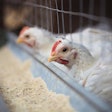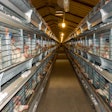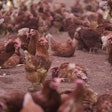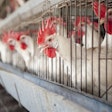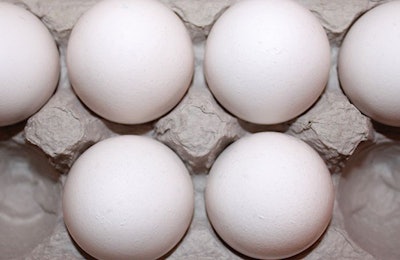
If the companies that have made cage-free pledges follow through on those pledges, the U.S. egg industry will need 223 million more cage-free layers by 2026, according to Maro Ibarburu, associate scientist – business analyst with the Egg Industry Center (EIC) at Iowa State University.
Ibarburu spoke during the EIC Issues Forum, held in Kansas City, Missouri, on April 16-17.
As of March 2019, 62 million birds in the U.S. layer industry (18%) were cage free. Of those 62 million, 15 million were also organic.
“Cage-free layers increased 31.4 million in the last three years; almost everything built [during that time] was cage free,” Ibarburu said.
However, Ibarburu said that, in order to meet pledges made, the industry will have to convert housing at a rate of 30.6 million cage-free layers per year for the next seven years. That is nearly three times as fast as what the industry has converted in the past three years.
“The ones that decide the direction of the industry are not the ones who bear the risks,” he said.
Cost concerns in transition to cage-free housing
“We will need $9.5 billion of investments in the next seven years, so about $1.4 billion a year to reach that level,” he said. Developing a new site adds more than 25% to the cost.
In some situations, he said, producers are making the transition when the replacement of old houses was already needed. But the problem is that method may not be fast enough to meet the market demand. In situations where producers are building new construction rather than replacing old conventional houses, this could lead to a surplus of eggs.
Ibarburu said this transition is complicated from a financial standpoint because producers are investing in the new housing system, and they will have higher operating costs.
Producers are running into the problem where retailers will buy some of the cage-free eggs at a premium cost, but not all of them. So, the leftovers end up in the conventional market, leaving the producer with a smaller margin to generate revenue.
“The big problem we are facing is that most of the pledges come from the retailers. The retailers give the consumers options and [consumers] tend to buy what is less expensive,” he said.
If the retailers can’t sell the eggs, they’re not going to continue to pay a premium price. He noted that the transition is easier for restaurants and food manufacturers to make because they’re not presenting the consumer with options.
However, on the other side of things, people looking for cage-free eggs may only shop with retailers that make the pledges.
“There might be less of a problem once the retailers are 100% cage free because then the consumers are not presented with options,” he said.
Transition can’t happen overnight; it can take more than two years before eggs can be produced in a new house, Ibarburu said. “That is why we need these premiums in advance.”
Is there more risk to come?
Ibarburu said there could be more risk for egg producers in the future.
“Retailers may feel that the pledges worked well for them and then pledge to go free range,” he said, potentially pushing the industry into the second round of investments.
“We don’t know which direction they’re (retailers) going to take,” he said. He added that those who make egg production pledges are not the ones at risk of a failed investment.
What about the smaller producers?
“Smaller producers will need to find a niche market,” he said. Cage free will create more competition for the smaller producers from the bigger producers because they are more efficient in some cases, Ibarburu said.
“If I was a smaller producer producing cage-free eggs, now I need to find something different -- it may be organic or pasture raised,” he said. This could allow the smaller producer to create a stream of revenue without competing with the larger producers.
How will Proposition 12 impact production?
In 2018, 40 million people consumed 11.4 billion eggs -- equivalent to the production of 39 million layers. California only has 14 million layers; under Proposition 12, the state will need to import at least 67% of what it consumes.
“To supply the California market, we will need a $2.3 billion investment,” he said. To supply California with just enough product to supply its shell egg demand, 27.2 million layers would be needed, which is a $1.6 billion investment, he said.
“The problem is we don’t know how much of what is currently going to California is already cage free. We know there are 62 million cage-free layers in the country, but some of those (eggs) are sold to different markets,” he said. This makes it hard to access how much further the cage-free industry needs to go.
Other states placing laws that prohibit conventionally raised eggs will affect the market and raise concerns similar to the ones raised about Proposition 12.
Health concerns
Higher mortality continues to be a concern from an efficiency and animal welfare standpoint in cage-free production. The dust in the houses is an issue for bird and human health.
Producers may also continue their battle against reappearing diseases and parasites that were easier to control when the hens were caged, such as coccidiosis, roundworms and red mites, which have particularly been a problem in Europe.
He added that poor feed conversion is also a problem, not only in terms of efficiency, but environmentally too.
Floor eggs could create food safety concerns.
For management to properly handle the potential health concerns associated with cage-free production moving forward, the industry will need more skilled rural workers, which could be a problem as there continues to be a labor shortage.




